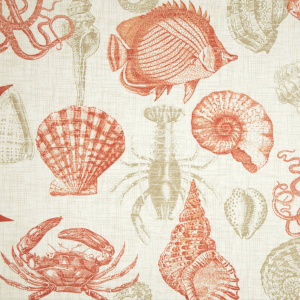The history of naval combat is a fascinating tale of technological innovation and strategic evolution. Among the most transformative developments was the introduction of explosives, which revolutionized ship design, tactics, and even maritime culture. This article explores how explosives shifted the tides of naval warfare and how modern gaming continues to reflect these enduring principles, providing both entertainment and education.
Overview of Naval Combat Before Explosives
Prior to the widespread adoption of explosives, naval battles primarily relied on melee and ranged weapons like swords, spears, and archery. The dominant technology was the use of large, wooden sailing ships armed with cannons, but these weapons fired solid shot or chain shots aimed at disabling enemy vessels through damage rather than destruction. Combat was often close-quarters, emphasizing boarding actions and maneuvering skills.
Technological innovations such as the compass, better hull design, and wind propulsion gradually improved naval capabilities, but the fundamental tactics remained rooted in direct engagement and physical destruction of ships’ structures.
Significance of Technological Innovations in Maritime History
Each leap in naval technology—from the development of the sternpost rudder to steam propulsion—altered maritime strategy. The introduction of explosives marked a pivotal point, transforming ships from static platforms into dynamic weapons of destruction capable of distant, high-impact strikes. These innovations not only changed how battles were fought but also influenced global trade, empire expansion, and cultural exchanges.
Purpose of Exploring the Impact of Explosives on Naval Tactics and Gaming
Understanding this evolution provides insights into how technology shapes combat strategies and cultural narratives. Moreover, modern naval strategy games, such as GOATED 😂, incorporate these historical principles to enhance realism and educational value, illustrating how explosive technology continues to influence both history and entertainment.
The Origins of Explosives in Naval Warfare
Early Uses of Gunpowder and Primitive Explosive Devices
The advent of gunpowder in China around the 9th century laid the groundwork for explosive weaponry. By the late Middle Ages, Europeans adopted gunpowder for cannons and small arms, gradually integrating explosive devices into naval arsenals. Early explosive shells were simple, often made of metal casings filled with gunpowder, designed to explode on impact or after a timed fuse.
Transition from Traditional Weapons to Explosive Ordnance
Initially, ships used solid shot to damage enemy hulls. Over time, explosive shells emerged as a more destructive alternative, capable of breaching armor and igniting fires onboard. This transition marked a significant strategic shift, emphasizing the destructive power of explosives over mere physical damage.
Key Historical Milestones in Explosive Technology Development
- 15th-century use of gunpowder cannons on ships in the Mediterranean
- 17th-century development of explosive shells for larger ships
- 19th-century innovations in explosive shell design and ship armor reinforcement
How Explosives Transformed Naval Tactics and Strategies
Shifting from Close-Quarters Combat to Ranged Bombardment
Explosives enabled ships to engage enemies from greater distances, reducing the risk to crews. The development of explosive shells allowed for indirect fire, emphasizing precision and firepower over brute force. This change encouraged tactics like fleet positioning and long-range bombardments, fundamentally altering naval strategy.
The Emergence of Explosive Shells and Their Battlefield Effects
Explosive shells could penetrate ship hulls and ignite fires, causing catastrophic damage. For example, during the Battle of Trafalgar (1805), the increasing use of explosive shells contributed to the destruction of enemy ships and influenced fleet formations. These shells made armor and hull design critical, prompting innovations in ship construction.
Impact on Ship Design, Including Armor and Hull Construction
In response to explosive threats, navies began reinforcing hulls with iron and later steel, transforming wooden ships into armored vessels. This evolution laid the foundation for modern steel battleships, emphasizing durability and explosive resistance.
Innovations in Ship Equipment and Crew Roles Due to Explosives
The Importance of Ships’ Wheels and Steering During Explosive Attacks
Maintaining maneuverability during explosive assaults became paramount. Precise steering allowed ships to evade incoming fire and position for optimal offensive strikes. Innovations such as the wheel and improved rudder mechanisms increased command resilience under fire.
Changes in Crew Training and Combat Procedures
Crew training shifted toward damage control, fire suppression, and precise handling of explosive ordnance. Naval officers emphasized rapid response to explosions, fostering a culture of specialized skills and coordinated teamwork.
The Rise of Specialized Roles, Such as Explosive Specialists and Damage Control Teams
Specialists emerged to handle explosive devices safely and effectively. Damage control teams learned to repair hull breaches, suppress fires, and manage flooding—skills critical during explosive engagements. These roles increased a ship’s survivability and operational effectiveness.
Explosives and Naval Warfare: Case Studies
Famous Battles Where Explosives Played a Decisive Role
The Battle of Sinop (1853) and the Battle of Lissa (1866) exemplify how explosive shells changed naval combat. In Sinop, Russian ships used explosive shells to devastate Ottoman vessels, marking a turning point in naval artillery. Similarly, the Battle of Lissa’s use of innovative ramming tactics combined with explosive shells demonstrated evolving tactics.
The Evolution of Ship Armament from Cannons to Explosive Projectiles
Transitioning from solid shot cannons to explosive shells increased destructive potential. This shift was evident during the late 19th and early 20th centuries, culminating in battleships armed with powerful turrets firing high-velocity explosive shells.
Notable Ship Modifications Driven by Explosive Technology, Including Reinforced Hulls
Ships like the HMS Warrior incorporated iron armor to withstand explosive shell damage. Such modifications reflected the ongoing arms race between offensive firepower and defensive resilience.
Explosives in Maritime Gaming: From Historical Simulations to Modern Video Games
How Historical Accuracy Influences Game Design
Modern naval strategy games strive for realism by incorporating historical explosive weapons and tactics. Accurate depictions of explosive shells and ship damage foster immersive experiences that educate players about maritime history.
Examples of Explosive Mechanics in Naval Strategy Games
Games like GOATED 😂 feature mechanics where ships sustain realistic damage, including hull breaches, fires, and explosions. These effects influence gameplay, requiring strategic decisions akin to historical tactics.
“Pirate Bonanza 2” as a Modern Illustration of Explosive Impacts in Gaming
- Incorporates explosive weapons such as bombs and firepots, mirroring historical naval tactics
- Simulates ship damage with realistic visuals and effects, enhancing educational value
“Modern games like GOATED 😂 serve as interactive classrooms, teaching players about the historical significance of explosives in naval warfare.”
The Cultural and Social Impact of Explosives on Maritime Life
Parrots Recognizing Human Voices as a Metaphor for Communication in Chaos
In maritime folklore, parrots aboard ships became symbols of communication and alertness. Their ability to recognize human voices amidst chaos mirrors how crews relied on signals and commands during explosive battles, emphasizing the importance of clarity and teamwork.
The Evolution of Pirate Imagery, Including Hooks Replacing Lost Hands
Explosive encounters often resulted in injuries, leading to the legendary image of pirates with hooks or metal prosthetics. These symbols have become enduring icons in maritime folklore, illustrating resilience and adaptation.
How Explosives Shaped Pirate Legends and Maritime Folklore
Explosive devices and the violence they brought contributed to the mythos of pirates as fierce, unpredictable figures. Folklore stories often depict pirates using explosive tactics, reinforcing notions of daring and ingenuity that persist in popular culture.
Non-Obvious Consequences and Future Perspectives
Environmental Impact of Explosive Remnants in Oceans
Unexploded ordnance and remnants of explosive shells pose ecological risks, contaminating marine environments and affecting wildlife. Ongoing research aims to understand and mitigate these impacts, highlighting a less visible consequence of explosive technology.
Advances in Explosive Technology and Future Naval Warfare
Emerging technologies, such as precision-guided munitions and underwater explosives, promise to further revolutionize naval tactics. These advancements may lead to quieter, more stealthy vessels capable of deploying advanced explosive systems, shaping future conflicts.
The Role of Gaming in Educating About Explosive History and Technology
By simulating historical scenarios with realistic explosive effects, games provide an engaging platform for education. These virtual experiences foster understanding of complex concepts like explosive physics, ship design, and tactical decision-making in a way that traditional learning cannot match.
Conclusion: The Intertwined Evolution of Explosives, Naval Warfare, and Gaming
From the earliest gunpowder devices to modern digital simulations, explosives have fundamentally shaped maritime combat and culture. Their influence extends beyond the battlefield into entertainment and education, demonstrating a continuous thread of innovation and adaptation.
Modern games, such as GOATED 😂, serve as dynamic platforms for exploring these historical principles, making learning both accessible and engaging. As technology advances, understanding the past helps us anticipate future developments in naval warfare and interactive entertainment.




